GE Profile 27.9 cu. ft. Smart 4-Door French Door Refrigerator with Door in Door in Fingerprint Resistant Stainless Steel
Easily access favorite items with door in door and rotating bin. Fill containers with filtered water hands-free using AutoFill. Adjustable temperature drawer with removable bin caddy.
GE Appliances provide up-to-date technology and exceptional quality to simplify the way you live. With a timeless appearance, this family of appliances is ideal for your family. And, coming from one of the most trusted names in America, you know that this entire selection of appliances is as advanced as it is practical.
-
Fingerprint resistant stainless – Easily wipe away smudges and fingerprints for a look that’s always sparkling clean
- Door in Door with rotating door bin – Easily store and access your favorites, including taller items like wine bottles, with an innovative door in door design and convenient rotating bin
- Hands-free Autofill – Lets you walk away while the dispenser automatically fills any container with filtered water
- LED light wall – Find even the smallest items easily with an entire back wall of LEDs that illuminate your entire refrigerator with crisp, white light
- Adjustable temperature drawer with bin caddy – Enjoy more storage flexibility and better organization with a removable bin caddy that’s perfect for storing canned drinks and more
- Soft-close drawers – Access fresh fruits and vegetables quickly and easily thanks to well-designed, clear soft close crisper drawers so your fresh favorites are always at your fingertips
- Built-in WiFi – Accidentally leave the door open? Not to worry! Receive an alert on your smart device any time your refrigerator’s internal temperature rises
- TwinChill™ evaporators – Separate climates in the fresh food and freezer sections help keep foods fresh
- Easy clean liner – Thanks to the smart design of this removable white liner, it’s easy to keep the drawer sanitized and sparkling clean
- Approximate Dimensions (in.) – 69-7/8 in. H x 35-5/8 in. W x 36-3/4 in. D
- Advanced water filtration uses XWF replacement filter
- Energy Star
Additional information
| Depth (Excluding Handles) | 34.25 |
|---|---|
| Depth (Including Handles) | 36.75 |
| Depth (Less Door) | 29 |
| Depth With Door Open 90 Degrees (In) | 48.375 |
| Height to Top of Door Hinge (in.) | 69.875 |
| Height to Top of Refrigerator (in.) | 68.625 |
| Product Depth x Height x Width (in.) | 36.75 x 69.88 x 35.63 |
| Refrigerator Width (In.) | 35.625 |
| Certifications and Listings | Energy Star,UL Listed |
| Manufacturer Warranty | Limited 1-year entire appliance |

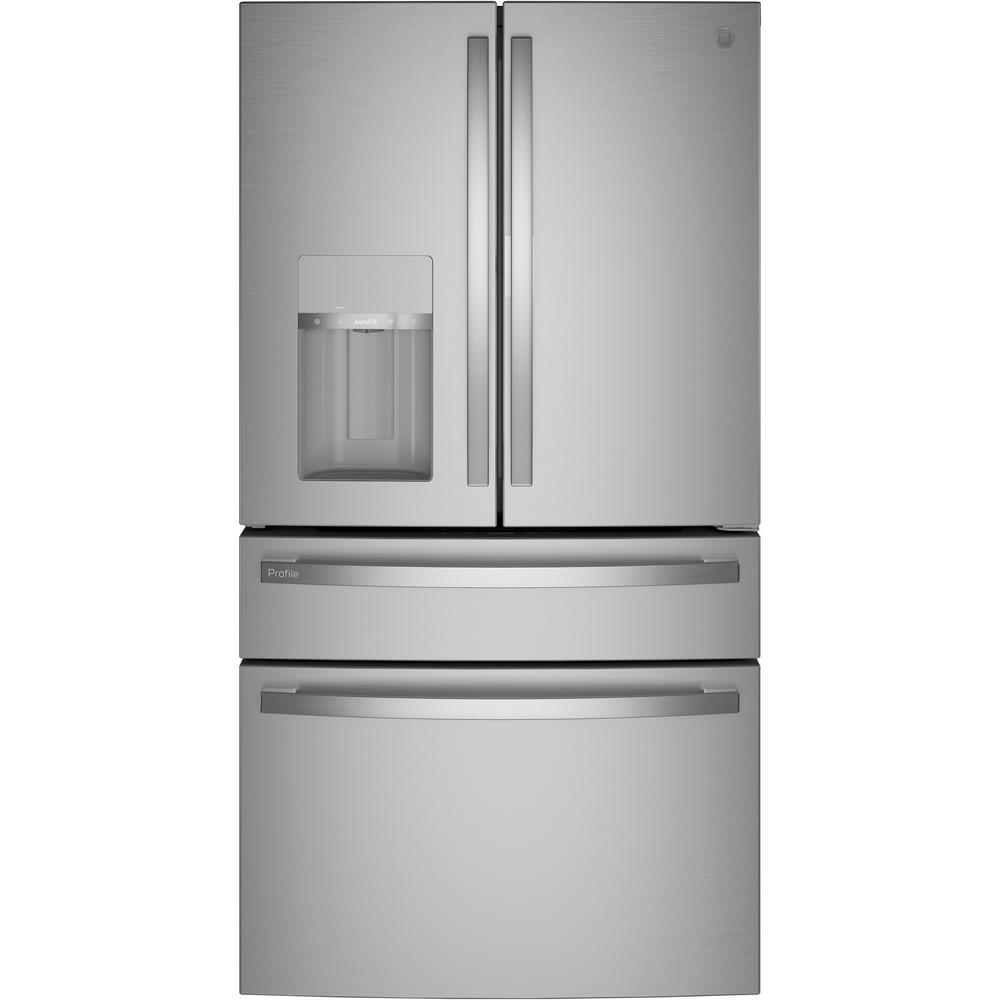
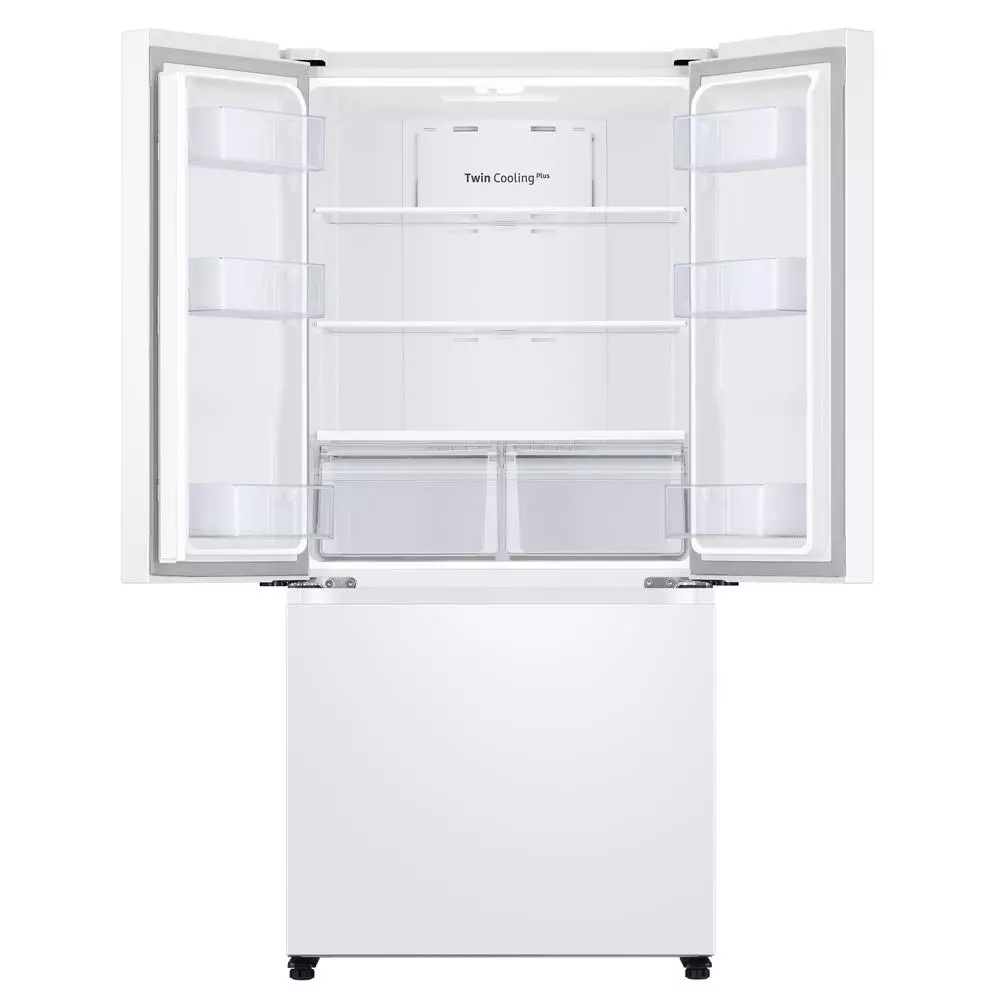
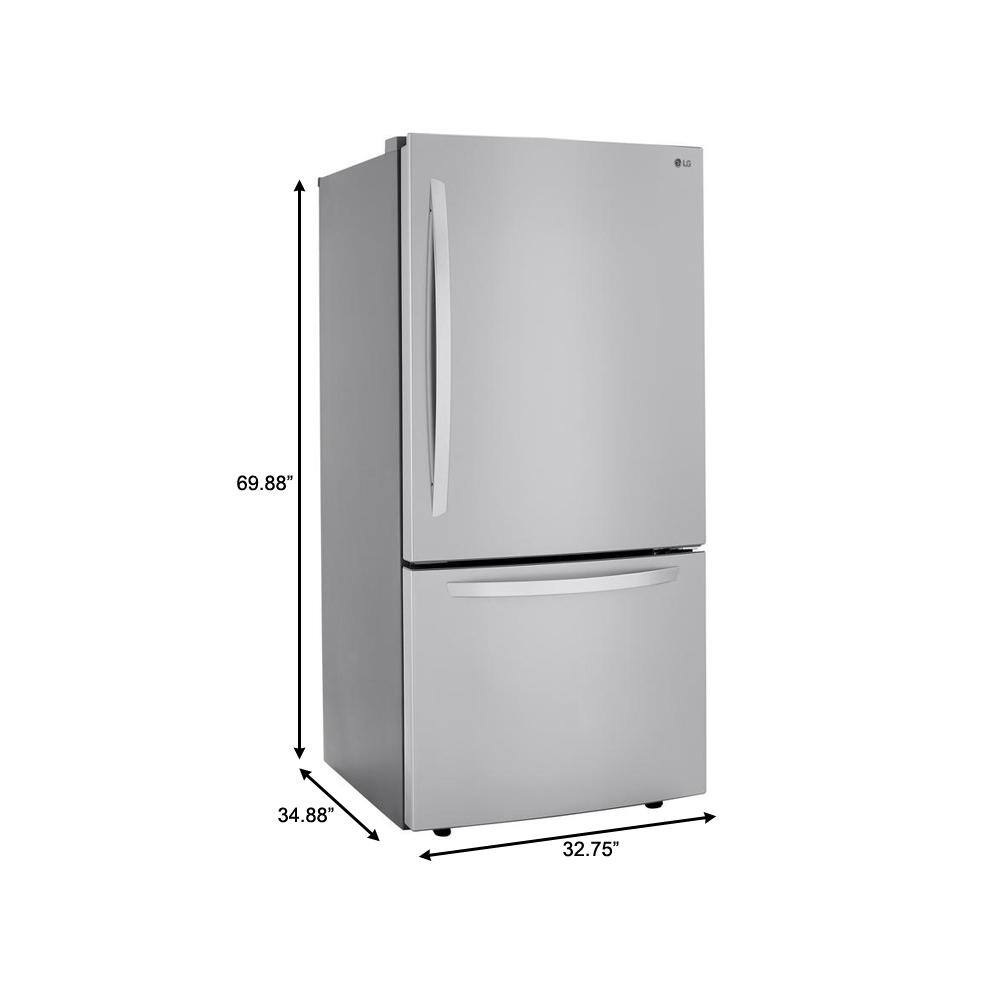
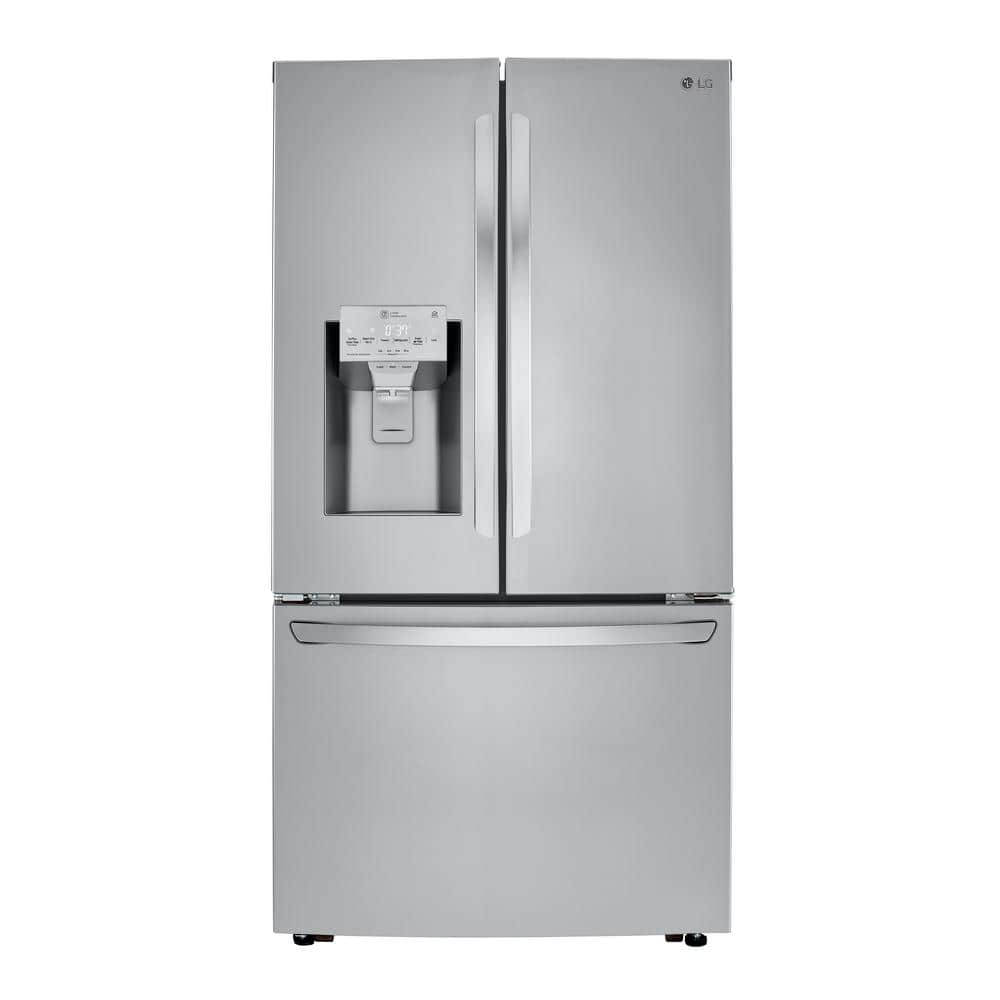
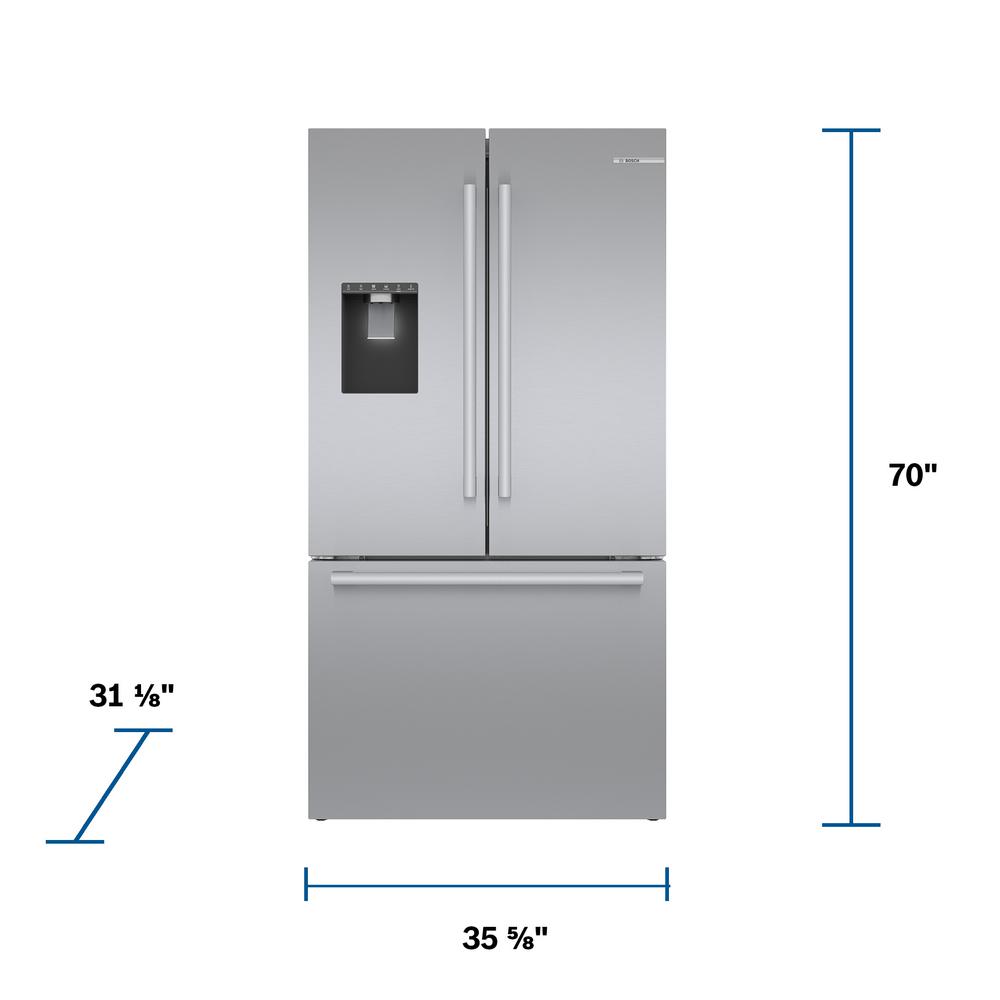
by Danny
Great Product, works great, love the space and the lighting in the fridge. Love the water sensor fill up on the front.
by Vera
Water dispenser features (autofill), touch screen is amazing. Fridge looks very good, back lighting is amazing inside it.
by Deak
Love everything about it. So glad we bought this refrigerator. Plenty of room.
by Nelson
Love the look of this frig. The door in door is great for those quick grabs. The LED lighting is wonderful. Barely hear it running and if you leave the door open you’ll be reminded by the door alarm! Love it!
by Jose
Lots of useable space and storage Very nice appearance Back light panel is nice Many options for food, vegetable, beverage and meat storage Amazing features. Ice maker features are good. Maximum capacity. Smart fridge!
by Bori
The fridge is nice, it is very bright when you open it thanks to the back light. It illuminates the entire thing. I like the half door feature and easy access to the bins. The space is good and the containers for fruit and veggie are actually pretty large. The center compartment with the individual temperature control is awesome it lets me keep certain foods at a different temp than the freezer but colder than the fridge. The freezer is also a bit large and has that slide drawer also. All in all it’s a great fridge. The only thing I saw was the ice chest is small but so is the ice so it makes it pretty fast. Not fast enough to provide for a party but fast enough to keep ice in the container and full.
by Whitney
We are very pleased with our new purchase. From purchasing to it being delivered, everything went smoothly. There was one part damaged in packaging. They immediately took care of and are sending g us a new part. I love how spacious and functional this refrigerator is. And the back drop screen and lighting is phenomenal!
by Miller
We shopped for a long time to find the frig that works best for us & the rating from reviewing online was exceptional. Love this GE Profile French Door Frig. The lighting is so bright with LED lighting and easy access to items inside. Water filter is located in the frig door; so convenient. Space saving ice maker allows you to have more room in your frig. Door in door latch allows for frequent items such a milk, juices without opening the entire frig. Spill proof shelves is a plus too along with the climate zone bins.
by Pedro
We love our new refrigerator so far! We like the wall of lighting and it is so brightly lit. The small drawer organizer is great and we love the quick access door. The only issue is a regular wine bottle fits Unopened but not with a stopper in it and unopened champagne will not fit at all (see pic). Not cool as this was a main feature we were excited about. Just have to drink the whole bottle of wine once opened I guess! Water is great and ice great but drops kind of loud when making ice. We love the lighting in the door also.
by Myles
I love everything about my iggy!!! It can do everything but talk back to me. I love the Wifi features, the Space, the Convience , It’s size, it’s performance, the Icemaker The two freezers at the bottom, I like controlling my iggy remotely